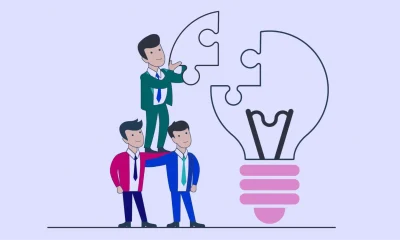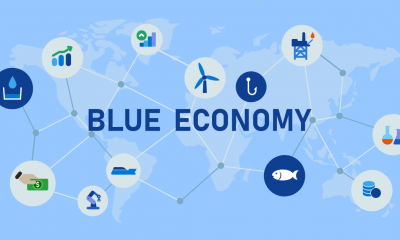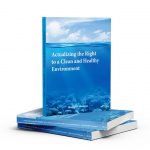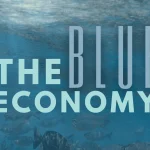By Hon. Prof. Kariuki Muigua, OGW, PhD, C.Arb, FCIArb is a Professor of Environmental Law and Dispute Resolution at the University of Nairobi, Member of Permanent Court of Arbitration, Leading Environmental Law Scholar, Respected Sustainable Development Policy Advisor, Top Natural Resources Lawyer, Highly-Regarded Dispute Resolution Expert and Awardee of the Order of Grand Warrior (OGW) of Kenya by H.E. the President of Republic of Kenya. He is The African ADR Practitioner of the Year 2022, The African Arbitrator of the Year 2022, ADR Practitioner of the Year in Kenya 2021, CIArb (Kenya) Lifetime Achievement Award 2021 and ADR Publisher of the Year 2021 and Author of the Kenya’s First ESG Book: Embracing Environmental Social and Governance (ESG) tenets for Sustainable Development” (Glenwood, Nairobi, July 2023) and Kenya’s First Two Climate Change Law Book: Combating Climate Change for Sustainability (Glenwood, Nairobi, October 2023), Achieving Climate Justice for Development (Glenwood, Nairobi, October 2023) and Promoting Rule of Law for Sustainable Development (Glenwood, Nairobi, January 2024)*
Mediation has been described as a method of conflict management where conflicting parties gather to seek solutions to the conflict, with the assistance of a third party who facilitates discussions and the flow of information, and thus aiding in the process of reaching an agreement. Mediation has also been defined as a process wherein the parties meet with a mutually selected impartial and neutral person who assists them in the negotiation of their differences.
The United Nations describes mediation as a voluntary process whereby a third party assists two or more parties, with their consent, to prevent, manage or resolve a conflict by helping them to develop mutually acceptable agreements. Mediation is normally a continuation of the negotiation process since it arises where parties to a conflict have attempted negotiations, but have reached a deadlock.
Parties therefore involve a third party known as a mediator to assist them continue with the negotiations and ultimately break the deadlock. A mediator does not have the power to impose a resolution, but rather facilitates communication, promotes understanding, focuses the parties on their interests, and uses creative problem solving to enable the parties to reach their own agreement.
Mediation is one of the processes that are commonly referred to as Alternative Dispute Resolution (ADR). These are mechanisms that are applied in managing disputes that may be linked to but function outside formal court litigation processes. The other ADR methods include negotiation, arbitration, conciliation, adjudication, expert determination, early neutral evaluation, and Traditional Dispute Resolution Mechanisms (TDRMs) among others.
Mediation alongside other ADR mechanisms are recognized at both global and national levels. At the global level, the Charter of the United Nations encourages parties to disputes to seek solutions by negotiation, enquiry, mediation, conciliation, arbitration, judicial settlement, resort to regional agencies or arrangements, or other peaceful means of their own choice. At a national level, the Constitution of Kenya requires courts and tribunals to promote ADR mechanisms including reconciliation, mediation, arbitration and Traditional Dispute Resolution Methods.
ADR mechanisms including mediation are viewed as ideal in enhancing access to justice due to their key attributes. It has been argued that mediation has certain advantages which makes the process viable in managing disputes. Its key features towards this end include informality, flexibility, efficiency, confidentiality, party autonomy and the ability to promote expeditious and cost-effective management of disputes. It has also the ability to preserve relationships due to its potential to address the root causes of the conflict thus negating the need for future conflict or conflict management.
In light of these advantages, it is not hard to see why mediation is the most viable tool for managing natural resource- based conflicts for peace and prosperity. Mediation is an ideal mechanism in managing natural resource- based conflicts and can promote effective management of natural resource based conflicts by fostering collaborative approaches towards management of natural resources and conflicts related to such resources. It also gives parties the freedom to come up with their own creative and long-term solutions to natural resource based problems.
However, despite mediation being a vital tool in preventing and resolving conflicts, it is often underutilized especially in the context of conflicts involving natural resources. It is imperative to embrace mediation in order to effectively manage natural resource based conflicts in light of growing global challenges including climate change, rapid population growth and environmental degradation.
In order to improve the practice of mediating natural resource based conflicts, it is imperative to consider the context of the natural resource in question, enhance access and dissemination of information, embrace collaborative approaches towards managing natural resource based conflicts, ensure the participation of all stakeholders in the mediation process, and strengthen the legal, policy, institutional and human capacity on mediation at all levels. Mediating natural resource- based conflicts for peace and prosperity is a goal that can be achieved by all countries.
*This is an extract from the Book: Promoting Rule of Law for Sustainable Development (Glenwood, Nairobi, January 2024) by Hon. Prof. Kariuki Muigua, OGW, PhD, Professor of Environmental Law and Dispute Resolution, Senior Advocate of Kenya, Chartered Arbitrator, Kenya’s ADR Practitioner of the Year 2021 (Nairobi Legal Awards), ADR Lifetime Achievement Award 2021 (CIArb Kenya), African Arbitrator of the Year 2022, Africa ADR Practitioner of the Year 2022, Member of National Environment Tribunal (NET) Emeritus (2017 to 2023) and Member of Permanent Court of Arbitration nominated by Republic of Kenya. Prof. Kariuki Muigua is a foremost Environmental Law and Natural Resources Lawyer and Scholar, Sustainable Development Advocate and Conflict Management Expert in Kenya. Prof. Kariuki Muigua teaches Environmental Law and Dispute resolution at the University of Nairobi School of Law, The Center for Advanced Studies in Environmental Law and Policy (CASELAP) and Wangari Maathai Institute for Peace and Environmental Studies. He has published numerous books and articles on Environmental Law, Environmental Justice Conflict Management, Alternative Dispute Resolution and Sustainable Development. Prof. Muigua is also a Chartered Arbitrator, an Accredited Mediator, the Managing Partner of Kariuki Muigua & Co. Advocates and Africa Trustee Emeritus of the Chartered Institute of Arbitrators 2019-2022. Prof. Muigua is a 2023 recipient of President of the Republic of Kenya Order of Grand Warrior (OGW) Award for his service to the Nation as a Distinguished Expert, Academic and Scholar in Dispute Resolution and recognized among the top 5 leading lawyers and dispute resolution experts in Band 1 in Kenya by the Chambers Global Guide 2024 and was listed in the Inaugural THE LAWYER AFRICA Litigation Hall of Fame 2023 as one of the Top 50 Most Distinguished Litigation Lawyers in Kenya and the Top Arbitrator in Kenya in 2023.
References
African Union., ‘Report of the African Union Panel of the Wise on Improving the Mediation and Resolution of Natural Resource-Related Conflicts Across Africa.’ Available at https://wedocs.unep.org/bitstream/handle/20.500.11822/31043/AUP.pdf?sequence=1 (Accessed on 22/01/2024).
Antonia. E., & Benedikt. K., ‘Negotiation and Mediation Techniques for Natural Resource Management.’ Available at https://iwrmactionhub.org/node/1988/printable/pdf (Accessed on 21/01/2024).
Bennett. L., ‘Mediation in Natural Resources and Land Conflicts.’ Available at https://climate-diplomacy.org/magazine/cooperation/mediation-natural-resources-and-landconflicts (Accessed on 21/01/2024).
Bercovitch. J., ‘Mediation Success or Failure: A Search for the Elusive Criteria.’ Cardozo Journal of Conflict Resolution, Vol. 7, p 289.
Food and Agriculture Organization., ‘An introduction to Natural Resource Conflicts, Collaborative Management and Sustainable Livelihoods.’ Available at https://www.fao.org/3/a0032e/a0032e04.htm (Accessed on 21/01/2024).
Humphreys. M., ‘Natural Resources, Conflict, and Conflict Resolution: Uncovering the Mechanisms.’ Available at https://d1wqtxts1xzle7.cloudfront.net/30923495/ch_8_- _humphreys-libre.pdf?139220 6230=&responsecontentdisposition=inline%3B+filename%3DNatural_resources_conflict_and_conflict.pdf (Accessed on 22/01/2024).
International Organization for Peace Building., ‘Natural Resources and Conflict: A Path to Mediation.’ Available at https://www.interpeace.org/2015/11/natural-resourcesand-conflict-a-path-to-mediation/ (Accessed on 22/01/2024).
JAMS Mediation Services., ‘Mediation Defined: What is Mediation?’ Available at https://www.jamsadr.com/mediation-defined/ (Accessed on 20/01/2024).
Kaufman. S., ‘Mediation in Environmental Disputes.’ Available at https://www.eolss.net/samplechapters/c14/E1-40-03-03.pdf (Accessed on 22/01/2024).
Muigua. K., ‘Alternative Dispute Resolution and Access to Justice in Kenya.’ Glenwood Publishers Limited, 2015.
Muigua. K., ‘Attaining Environmental Justice through Alternative Dispute Resolution.’ Available at https://kmco.co.ke/wp-content/uploads/2023/07/AttainingEnvironmental-Justice-throughAlternative-Dispute-Resolution.pdf (Accessed on 22/01/2024).
Muigua. K., ‘Environmental Conflict Management Institutions and Approaches.’ Available at https://kmco.co.ke/wp-content/uploads/2022/09/EnvironmentalConflictManagement-Institutions-and-Approaches.pdf (Accessed on 21/01/2024).
Muigua. K., ‘Managing Environmental Conflicts through Alternative Dispute Resolution.’ Available at https://kmco.co.ke/wp-content/uploads/2024/01/ManagingEnvironmental-Conflicts-through-Alternative-Dispute-Resolution-1.pdf (Accessed on 22/01/2024).
Muigua. K., ‘Managing Environmental Conflicts through Participatory Mechanisms for Sustainable Development in Kenya.’ Available at https://kmco.co.ke/wpcontent/uploads/2018/08/ManagingEnvironmental-Conflicts-through-ParticipatoryMechanisms-for-Sustainable-Development-in-KenyaKariuki-Muigua-August-2018.pdf (Accessed on 21/01/2024).
Muigua. K., ‘Managing Natural Resource Conflicts in Kenya through Negotiation and Mediation.’ Available at https://kmco.co.ke/wp-content/uploads/2018/08/ManagingNatural-Resource-Conflicts-in-Kenya-through-Negotiation-and-Mediation.pdf (Accessed on 22/01/2024).
Muigua. K., ‘Natural Resource Conflicts: Addressing Inter-Ethnic Strife through Environmental Justice in Kenya.’ Available at http://kmco.co.ke/wpcontent/uploads/2019/09/Natural-ResourceConflictsAddress ing-Inter-Ethnic-StrifeThrough-Environmental-Justice-in-kenya-Kariuki-Muigua7th-September2019.pdf (Accessed on 22/01/2024).
Muigua. K., ‘Resolving Conflicts through Mediation in Kenya.’ Glenwood Publishers Limited, 2nd Edition., 2017.
ReliefWeb., ‘Natural Resources and Conflict: A Guide for Mediation Practitioners.’ Available at https://reliefweb.int/report/world/natural-resources-and-conflict-guidemediation-practitioners0#:~:text =One%20of%20the%20prerequisites%20to,by%20an%20independent%20third% 20party (Accessed on 21/01/2024).
United Nations Department of Political Affairs., ‘Natural Resources and Conflict: A Guide for Mediation Practitioners.’ Available at https://gsdrc.org/documentlibrary/natural-resources-and-conflict-a-guide-for-mediation-practitioners/ (Accessed on 21/01/2024).
United Nations Environment Programme., ‘Environmental Cooperation and Peacebuilding.’ Available at https://www.unep.org/topics/fresh-water/disasters-andclimatechange/environment-security/environ mentalcooperationand#:~:text=International%20law%2C%20environment%20and%20conflict,an d%20reliance%20on%2 0conflict%20resources (Accessed on 21/01/2024).
United Nations Environment Programme., ‘Mediation Can Prevent, Resolve Natural Resources Disputes New UN Guide Launched.’ Available at https://www.unep.org/news-and-stories/pressrelease/mediation-can-prevent-resolve-naturalresources-disputes-new-un (Accessed on 22/01/2024).
United Nations Environment Programme., ‘Natural Resources and Conflict: A Guide for Mediation Practitioners.’ Available at https://wedocs.unep.org/bitstream/handle/20.500.11822/9294/- Natural_resources_and_conflic.pdf?sequence=2&%3BisAllowed (Accessed on 20/01/2024).
United Nations Environment Programme., ‘Natural Resources and Conflict: A Guide for Mediation Practitioners.’ Available at https://wedocs.unep.org/bitstream/handle/20.500.11822/9294/- Natural_resources_and_conflic.pdf?sequence=2&%3BisAllowed (Accessed on 20/01/2024).
United Nations Environment Programme., ‘Natural Resources and Conflict: A Guide for Mediation Practitioners.’ Available at https://wedocs.unep.org/bitstream/handle/20.500.11822/9294/- Natural_resources_and_conflic.pdf?sequence=2&%3BisAllowed (Accessed on 22/01/2024).
United Nations, Charter of the United Nations, 24 October 1945, 1 UNTS XVI 11 Ibid, Article 33 (1) 12 Constitution of Kenya, 2010., Article 159 (2) (c) Government Printer, Nairobi.
United Nations., ‘Basics of Mediation: Concepts and Definitions.’ Available at https://peacemaker.un.org/sites/peacemaker.un.org/files/Basics%20of%20Mediation.pdf (Accessed on 20/01/2024).
Uwazie. E., ‘Alternative Dispute Resolution in Africa: Preventing Conflict and Enhancing Stability.’ Africa Security Brief, No. 16 of 2011.

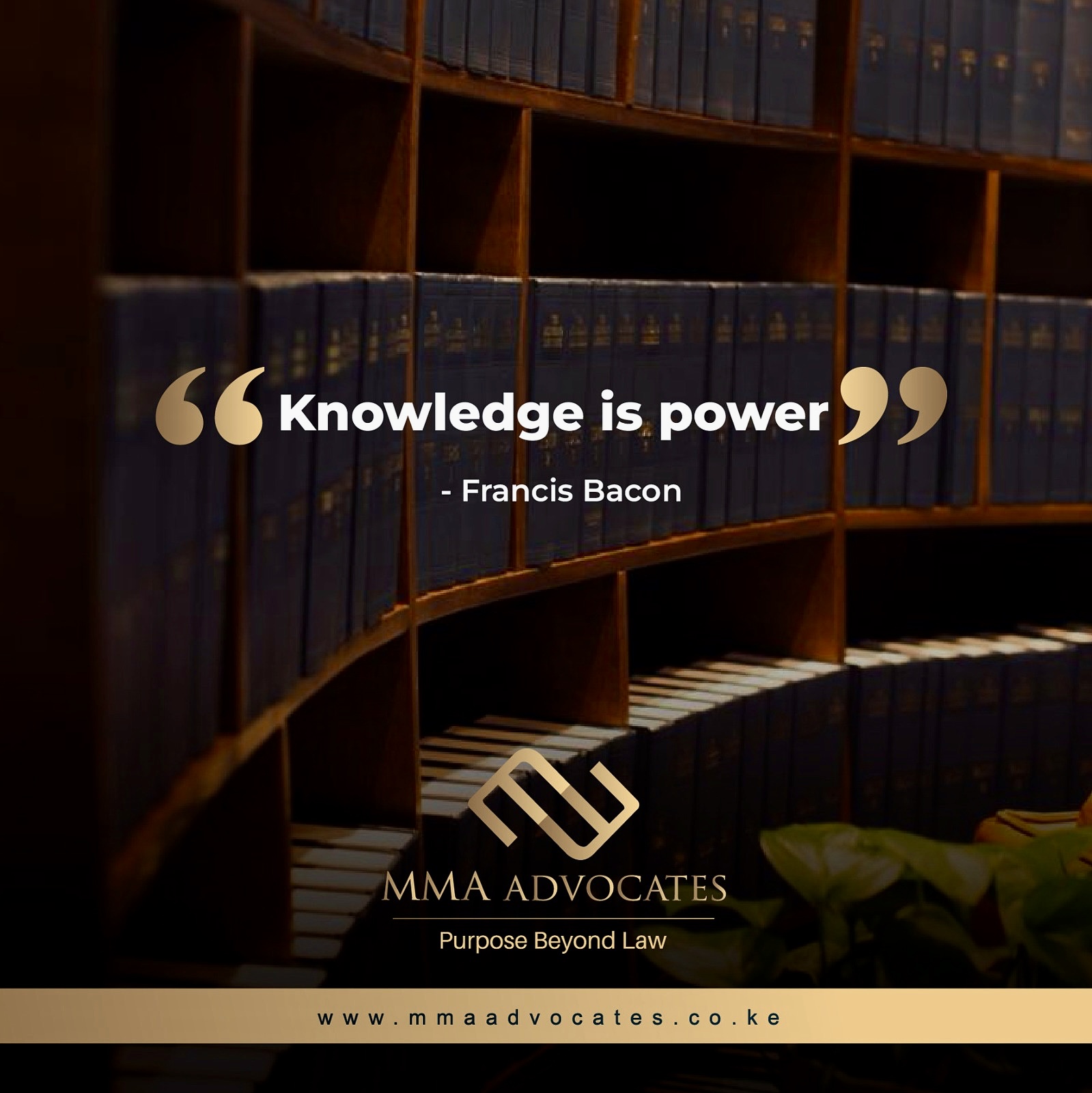



 Lawyers1 year ago
Lawyers1 year ago
 News & Analysis3 years ago
News & Analysis3 years ago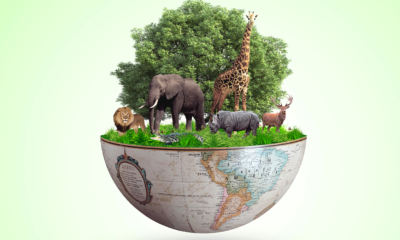
 News & Analysis3 years ago
News & Analysis3 years ago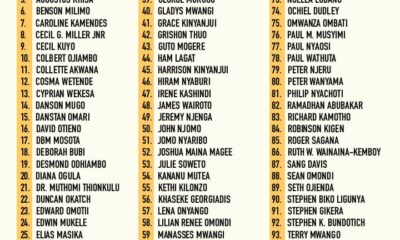
 Lawyers1 year ago
Lawyers1 year ago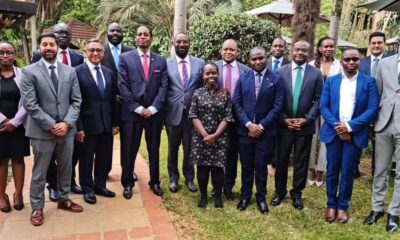
 News & Analysis2 years ago
News & Analysis2 years ago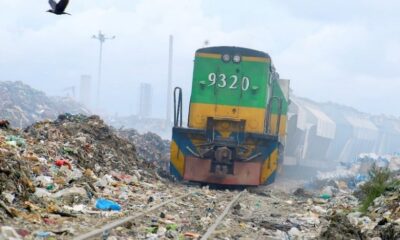
 News & Analysis1 year ago
News & Analysis1 year ago
 News & Analysis3 years ago
News & Analysis3 years ago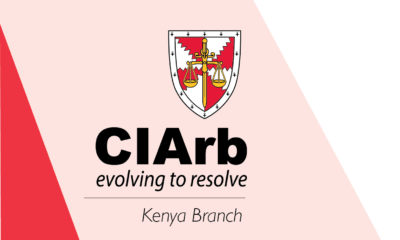
 News & Analysis1 year ago
News & Analysis1 year ago









